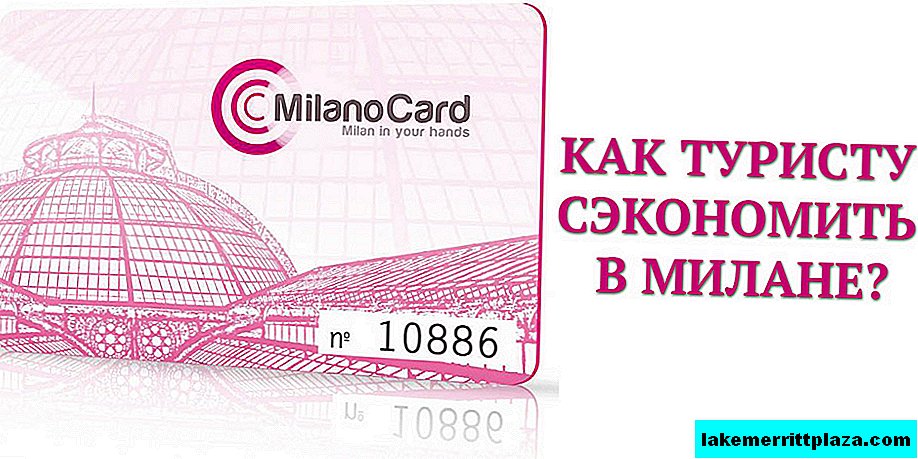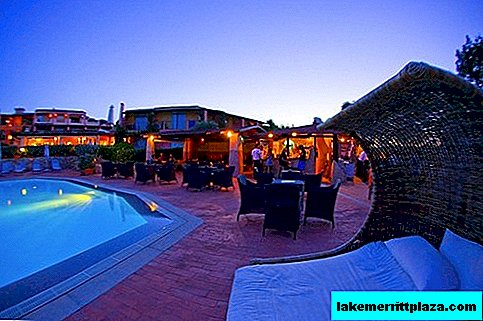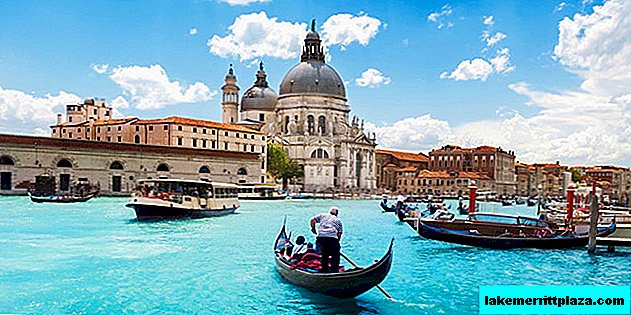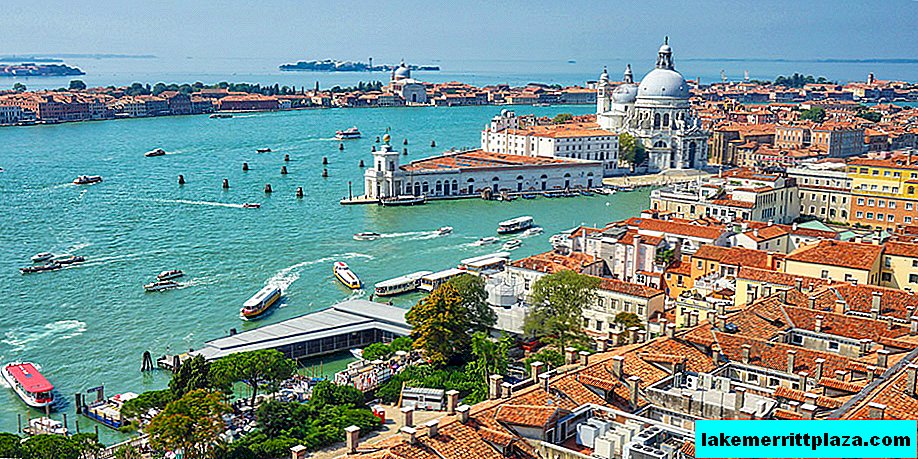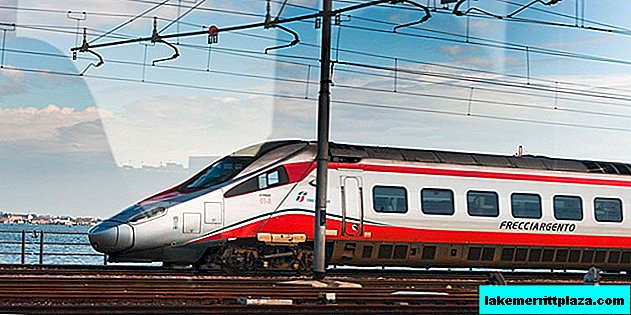Cathedrals and churches are one of the main assets of Venice: the city has about 250 consecrated churches, each of which boldly deserves the title of a work of art. The walls of many of them contain canvases of great painters and sculptors, so visiting the temples can be interesting not only to believers, but also to all art admirers.
Many churches in Venice are open for free admission throughout the day. But even in cases where an entrance fee is charged, the amount you have to pay for the opportunity to see Titian or Giordano in the original can be considered quite symbolic.
The 16 main churches of the city are part of the Association of the Venetian Patriarchate, the so-called Chorus Venezia. It is here that in the first place you should look for the masterpieces of Italian painters of the Renaissance.
There is a single Chorus Pass for € 12, which allows you to visit any church on the Chorus list or all at once. But many treasures lurk in the walls of the basilica, not included in the treasured list.
BlogoItaliano decided to compose his Top 10 most remarkable cathedrals and churches in Venice, which includes both representatives of Chorus Venezia, and temples, which tourists are less aware of.
St. Mark's Cathedral (Basilica di San Marco)
The most famous Cathedral of Venice and one of the most beautiful cathedrals in the world impresses with its splendor even the most sophisticated visitor. It is no coincidence that St. Mark's Cathedral is a UNESCO World Heritage Site. Among his countless treasures are the Pala d'Oro golden altar, mosaic icons, ancient bronze sculptures of horses and, of course, the relics of St. Mark the Evangelist.
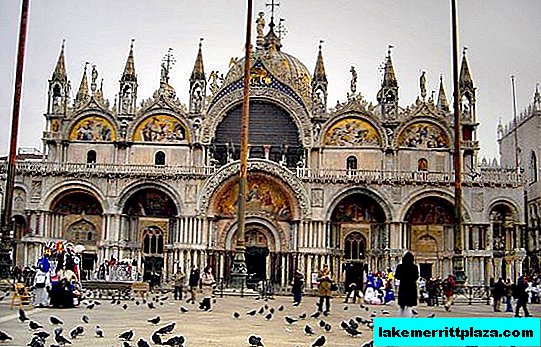
St. Mark's Cathedral is a UNESCO World Heritage Site
The construction of a new sanctuary, which was to express and affirm the power of the Republic of Venice, began in the 9th century. The cathedral was solemnly consecrated in 1094, but its design continued for several centuries.
The model for the Venetian Cathedral was the church of the Twelve Apostles, which has not been preserved to this day, in Constantinople. The building is crowned with five domes, inside decorated with mosaics on the plots of the Old Testament.
Numerous mosaics also cover the walls of the cathedral - and even the icons depicting the life story of St. Mark are made in the form of mosaics.
The main value of St. Mark's Cathedral is the Pala D'Oro golden altar, consisting of 80 icons and inlaid with 2000 gems.
Opening hours:
- From November to April: Mon-Sat: 9: 45-17: 00; Sunday and holidays: 14: 00-16: 00
- From April to November: Mon-Sat: 9: 45-17: 00; Sunday and holidays: 14: 00-17: 00
Tickets: Admission is free (ticket to the Pala d'oro golden altar - € 2, to the treasury - € 3, to the museum - € 5).
Basilica of the Virgin Mary of the Healing (Basilica di Santa Maria della Salute)
The construction of the Basilica of the Virgin Mary of Healing began in 1630-1631 and lasted half a century. The consecration of the cathedral took place after the death of the architect Balthazar Longen.
The construction of the temple was conceived as a praise of the Madonna for saving the city from the plague. Mass in gratitude for getting rid of the plague in the church is still being served.

The church stands on a million wooden piles driven into the soft mud of a lagoon
The church has the shape of an octahedron and stands on a million wooden piles driven into the soft mud of the lagoon. The unusual entrance is made in the form of a triumphal arch, and the mosaic floor is lined with concentric circles. The dome of this beautiful church is captured in the canvases of Canaletto, Turner and Sargent.
The spacious hall of the cathedral is decorated with colorful marble, sculptures and mosaics. Altar images belong to the brush of Luke Giordano, works of Tintoretto and Titian stored here are of no less value.
Opening hours: Mon-Sun 9: 30-12: 00 and 15: 00-17: 30
Ticket price: € 4
Church of St. Panteleimon (La chiesa di San Pantalon)
This unprepossessing at first glance, the church lurks within its walls (or rather, under the ceiling) a real treasure: the largest artistic canvas in the world by Giovanni Antonio Fumiani.

This nondescript church has a real treasure in its walls.
The ceiling painting-blende "Martyrdom and Ascension of St. Panteleimon" covers an area of more than 700 m2. It took 24 years to create the mural. They say that the artist died, tearing himself from the woods while working on it.
In addition to its size, the picture is notable for the fact that on a low flat ceiling there is a feeling of a deep arch, reinforced by the absence of the usual frame and the smooth transition of the picture from the ceiling to the walls.
The altar of the Church of St. Panteleimon is decorated with another masterpiece by Paolo Veronese - the painting "The Miracle of St. Panteleimon", which became the last work of the master. Here you can also see paintings by Antonio Vivarini, Giovanni d'Alemagna and Paolo Veneziano.

Ceiling fresco "Martyrdom and Ascension of St. Panteleimon"
The building acquired its present appearance in 1668-1686, before that, over the course of six centuries, the church was rebuilt several times.
Opening hours:
- Mon-Sat: 10: 00-12: 30 and 15: 30-18: 00
- Sun: 9.30-12.30; 15.30-18.00
Tickets: Free admission
Cathedral of the Assumption of the Virgin Mary (Basilica di Santa Maria Gloriosa dei Frari)
The Cathedral of the Assumption of the Virgin Mary - that is a frequent case for Venice when the church is not inferior to the museum in the number of wealth collected in it. The masterpieces of Titian and Donatello are even more impressive against the background of the characteristic simplicity of the Franciscan churches.
The construction of the cathedral, made in the style of Italian Gothic, took about a century: it was built from 1338 to the middle of the 15th century. The exterior walls of the cathedral, built in the shape of a Latin cross, are decorated with capitals and pilasters, as well as a brick frieze and white stone statues.
Near the cathedral, a bell tower ascended 70 meters - the second tallest building in Venice. If you wish, you can climb to the observation deck and admire Venice from a bird's eye view.

The Cathedral houses sculptures and paintings by great masters
The interior of the church is even more striking, where the Ascension of Mary rises above the altar by Titian’s brush, and the sacristy is decorated with the Madonna and Child by Giovanni Bellini.
Donatello's only work in Venice is also kept here - a wooden statue of John the Baptist. An outstanding example of woodcarving are choirs with reliefs of saints on each of 124 armchairs.
Several Doges of Venice found their peace in the Cathedral of the Assumption of the Virgin Mary, as well as the artist Titian and sculptor Antonio Canova, whose magnificent tombstones amaze no less than the paintings of great masters.
Opening hours:
- Mon-Sat: 9 a.m. - 6 p.m.
- Sun: 13: 00-18: 00
Ticket Price: € 3
Cathedral of San Giorgio Maggiore (Cattedrale di San Giorgio Maggiore)
San Giorgio Maggiore Cathedral is located on the island of the same name. Pius VII was crowned here, and eight years later Napoleon Bonaparte turned the monastery into barracks, unrecognizably changing the appearance of buildings.
The cathedral was again restored in the second half of the 20th century at the initiative of the new owner - Count Vittorio Cini. The construction of the temple dates back to 1566-1610, the architect Andrea Palladio died before the end of the work, and his student Vincenzo Scamozzi completed the work begun by the master.

San Giorgio Maggiore Cathedral is located on the island of the same name.
At the altar, made by the sculptor Girolamo Campania, a figure of Christ is installed, which stands on a golden ball, supported by four evangelists. There are many modern sculptures and paintings in the cathedral, but among them you can find such masterpieces of the late Renaissance as The Last Supper and The Fall of Mann by Tintoretto.
A viewing platform on top of a square brick bell tower, built in 1791 instead of a collapsed belfry next to the cathedral, is especially popular among tourists. Not so long ago, the tower acquired an elevator, so getting to the top to cover the whole of Venice with a single eye has now become even easier and faster.
Opening hours:
- April to October: Mon-Sun 09: 00-19: 00
- November to March: Mon-Sun: 08: 30-18: 00
Entrance to the cathedral is limited during Sunday service from 10:40 a.m. to 12:00 p.m.
Tickets: Admission is free (ticket to the tower - € 6).
Church of St. Mary the Miraculous (Chiesa di Santa Maria dei Miracoli)
According to legend, multi-colored marble, from which carvings and mosaics are made, adorning the facade and interior of the Church of St. Mary the Miracle-Worker, remained from the construction of St. Mark's Cathedral. A church that looks like a carved box is today a popular wedding venue.
The construction of the church according to the plan of Pietro Lombardo and his son Tullio Lombardo lasted 8 years and was completed in 1489. The miraculous image of the Virgin Mary Nicolo di Pietro is kept here.

Santa Maria dei Miracoli today is a popular wedding venue
The dome of the church, crowned with portraits of the prophets and saints by Pierre Maria Penacchi, was built later, in 1589. According to the architect's idea, the frescoes and statues on the facades traditional for the churches of Venice were replaced by marble painstakingly painted in circles, octagons and crosses.
Inside the church, the game of shapes and colors continues: the golden color of the domed ceiling contrasts with the cool shades of the marble walls. It is said that Winston Churchill was so impressed with this church that he called it the most beautiful miracle seen in life.
Opening hours: Mon-Sat: 10: 30-16: 30
Ticket price: € 3
Cathedral of the Great Martyrs John and Paul (Basilica dei Santi Giovanni e Paolo)
The Cathedral of Saints John and Paul Lateran became the resting place of 18 Venetian Doges and several dozens of famous Venetians. This is one of the largest cathedrals in the city. Due to the huge number of paintings, sculptures and stained-glass windows, it even looks more like a museum.
Sculptures and gravestones are the few that survived the fire that happened in the church in 1867 and destroyed, among other things, the murals of Titian.

Cathedral of the Great Martyrs John and Paul is one of the largest cathedrals in the city
Of the paintings, only a few works of Veronese, Vivarini and Bellini were saved then. Today there is a whole collection of works of art of the XV century framed by painted shades and chess floors.
The construction of the cathedral in its current form was completed in 1430. The building is made of red brick in the Gothic style, inside the high arches are supported by elegant columns. The cathedral is not dedicated to the biblical apostles, as one might think, but to two early Christian martyrs.
Opening hours:
- Mon-Sat: 7: 30-12: 30 and 15: 30-19: 00
- Sun: 15: 00-18: 00
Ticket Price: € 3,5
Church of Santa Maria del Gigl (Chiesa di Santa Maria del Giglio)
The Church of Santa Maria del Giglio surprises visitors with an unusual facade: instead of the figures of saints, Giuseppe Sardi decorated it with the outlines of cities. So the architect immortalized the memory of his friend Admiral Antonio Barbaro. The admiral’s figure perpetuates the composition, which captures the cities where the Venetian military served: Rome, Padua, Corfu, Zadar, Candia and Split.

Santa Maria del Giglio surprises city guests with an unusual facade
The church has something to surprise those who look inside: here you can see the painting "The Holy Family" (suggesting that it belongs to Rubens) and Tintoretto's paintings.
Opening hours: Mon-Sat: 10: 30-16: 30
Church of St. Mary the Merciful (Santa Maria della Pietá)
The Church of St. Mary of Mercy is the very church where, at the beginning of the 18th century, Antonio Vivaldi conducted. Pupils of an orphanage for girls spoke here, in which the great composer taught from 1704 to 1740. Vivaldi's music sounds under the arches of the church today.

It was here that at the beginning of the XVIII century the great Antonio Vivaldi worked
The church, built at the Charity Shelter for the sick orphans, got its name by chance: pieta from Italian and translates as "mercy." The ceiling of the church is decorated with a fresco by Tiepolo "The Triumph of Faith".
The church often hosts concerts, both paid and free. The cost of concert tickets may vary. Tickets for them can be bought on the spot.
Opening hours:
- Tue-Fri: 10: 15-12: 00 and 15: 00-17: 00
- Sat-Sun: 10: 15-13: 00 and 14: 00-17: 00
Ticket price for visiting the church: € 3
Jesuit Church (Chiesa di Gesuiti)
The baroque church, when consecrated, called the Church of Santa Maria Assunta, causes controversial feelings: many find the rich interior decoration lurid, but, nevertheless, it cannot be denied originality.
One can hardly guess what is hidden behind a white shiny facade with traditional statues of saints. Meanwhile, a complex marble inlay awaits you inside, creating the feeling of a velvet curtain draped over the floor, walls and altar.
Marble drapery of white and green flowers to some extent even overshadows the painting of Titian's “Martyrdom of St. Lawrence”.

At the consecration of the basilica, it was named - Church of Santa Maria Assunta
The church was built in the years 1715-1729 by the architect Domenico Rossi. In 1807, the church was given over to army barracks and returned to its original function only in 1844.
Opening hours: Mon-Sun: 10: 00-12: 00 and 16: 00-18: 00
Tickets: Free admission

